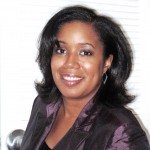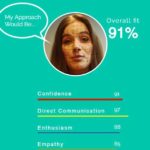And for Gary Tahmahkera, Comanche Indian Who Put His Pre-Med Dreams on Hold, It’s Just a Beginning
By Patty Talahongva Native American Village Contributor
It’s pretty typical for a college student to pull an “all-nighter” to study for a test, except for Gary Tahmahkera. He rattles off a recent 42-hour period without sleep that includes studying for an exam, going to class, working at one of his two jobs, taking the exam, tutoring a classmate, more studying and classes, and he thinks he ate sometime during that period. He laughs as he says his 47-year-old body is still recovering. Tahmahkera is not your average “returning student,” even though he is back in college full time after a 17-year career as a police officer and chief of police. He’s Comanche Indian and his cultural teachings have always guided him and continue to guide him. His Comanche name is Wasapi. It means bear and like a bear waking up after a long hibernation, he’s back on track to complete his education and fulfill a lifelong dream of becoming a medical doctor. Tahmahkera is among thousands of American Indian students, either new or returning, who are enrolled in college. Today many American Indian students have the option of attending one of more than 30 tribal colleges across the country. For many it makes the transition to a standard four-year college much smoother. In 1968 the first tribal college was established in Tsaile, AZ. Diné College is located on the Navajo Nation reservation. Forty years later, there are more than 30 colleges operated by tribal nations across the country, including Comanche Nation College in Lawton, OK. When Tahmahkera graduated from high school in 1979 his tribal college didn’t yet exist so he enrolled at Arizona State University and joined the Reserve Officer Training Corps (ROTC). He went straight to boot camp before his first semester at college. He wound up serving in the U.S. Army Reserves and in the Arizona National Guard for a combined total of 12 years. During that time he managed to sneak in a few classes towards his pre-med major. But then he got married and started his family. One day he read an ad for the Salt River Pima-Maricopa Indian Community in Scottsdale, AZ. They needed police officers and he felt he could do that job with his military background. “I thought it was going to be temporary. But I ended up staying there for 17 years,” he says, yet, “In the back of my mind I always knew I’d go back to school.” Today he has seven good reasons to graduate from medical school: his seven children, ranging in age from eight to 21. He’s trying to teach them that you should finish what you start. However, he says sometimes, “They don’t like it because I don’t have the money to buy them things.” Yet he says his younger children like to hang out with him on campus and even study with him at the library. “It inspires them,” he explains. “One wants to be a teacher, another a marine biologist and one wants to join the Air Force and be a pilot.” “I say for the older ones it scares them,” he says, because they see how much time he needs to study and also work two jobs. Tahmahkera is enrolled at Arizona State University in Tempe, Arizona. He’s majoring in Biology and hopes to graduate by the summer of 2009. He already has a B.S. in Interdisciplinary Studies with a concentration in Criminal Justice and Management from Charter Oak State College based in Connecticut. He took classes at a campus branch in Mesa, AZ. Now he’s going for another B.S. in Biology which will enable him to apply to medical school.
“I want to go to the Southwest School of Naturopathic Medicine,” he says. It’s also located in Tempe. “Their philosophy of medicine is more holistic as opposed to issuing prescription drugs,” and he notes it “also mimics a traditional Native American healer’s philosophy of making sure the patient is in balance and harmony with himself and his environment.” Even though his own tribe’s college is up and running now, it doesn’t offer him the courses he needs to take to get into medical school. But he would still like to attend Comanche Nation College for one main reason, “…because they teach the Comanche language, that’s what I’d be interested in.” Tribal Colleges offer courses in tribal language, history and government. Those courses are hugely popular, especially the language courses. Maybe one day he’ll be able to move back to his tribe’s land and take those language courses, but for now his educational journey remains at Arizona’s largest university. He rides his bike to class to save money on a parking permit. It’s a six-mile round trip. He works on campus at the Student Recreation Center where he can also lift weights on weekends. His second job is being an academic advisor at Mesa Community College. His own life experience gives him added insight in guiding students and their parents. He finds himself providing guidance to his fellow classmates as well. His study partners are less than half his age. “Most of them don’t know I’m old,” he laughs. “Most of them think I’m around 25 or 27. I don’t think I look that young. They do.” They are usually in disbelief; he chuckles when he tells them his age. He thinks college is easier today for him because he’s more focused and less distracted. But being focused means he’s had to put some of his traditions on hold. He used to dance at pow wows (large traditional dance gatherings originating with the Plains Indians). His style of dance is called Southern Straight or Southern Traditional. He is practices Gourd Dancing, a style of dance reserved only for veterans. But now that he’s back in school and working two jobs, he can’t afford the time to participate in the dances. School is his focus and his priority. So what about balance in his life? How is the budding doctor making sure he stays in balance with his environment? What does he do for fun? “Go to school!” he jokes. Truthfully, he does take time to relax by spending time with his kids. “I’ll go watch my third son in the marching band,” he says. “My two daughters play the violin and the viola so I go to their concerts. And I have a son who also plays the viola.” And perhaps one day one of his children will enroll and graduate from their tribal college.
Other Recent Readings of InterestOn the Web
|
||
|










